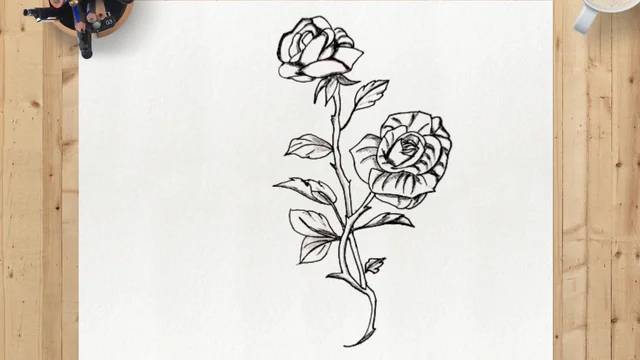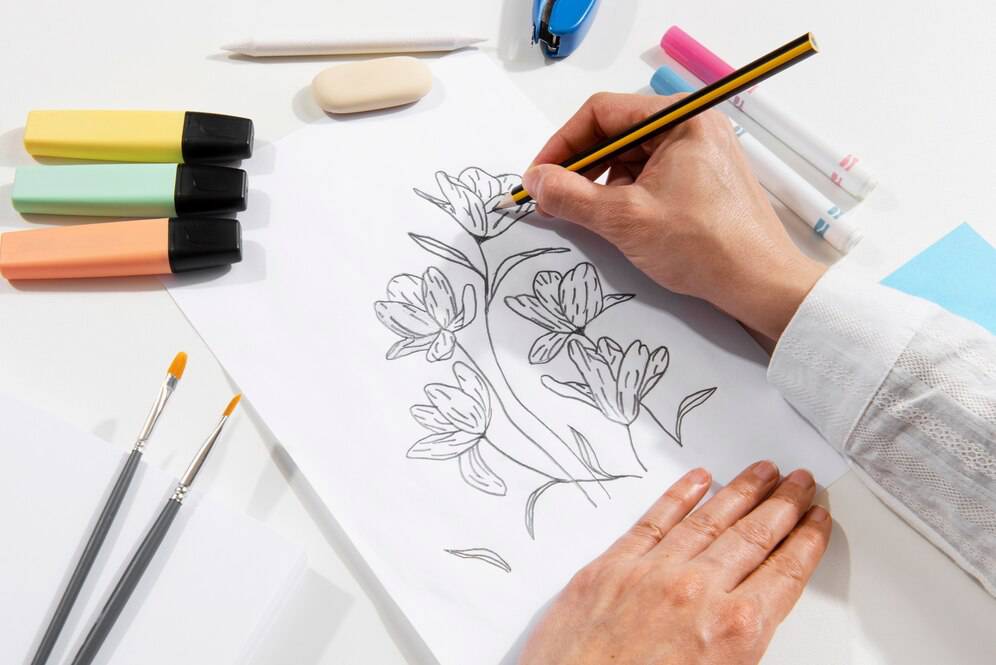Sketching is a powerful form of expression, and for many artists, flowers are one of the most inspiring and beautiful subjects to capture. Whether you’re a beginner looking to learn the basics or a seasoned artist wanting to refine your techniques, mastering flower sketching can open up a world of artistic possibilities. In this comprehensive guide, we’ll walk you through the entire process of how to Sketch:llhoknq5lea= A Flower, offering expert tips and insights to help you bring your floral sketches to life.
Table of Contents
The Basics of Flower Sketching
Before you start your sketch, it’s essential to understand the foundational elements that make a flower sketch truly captivating. Flowers are naturally intricate, with their delicate petals, textures, and varying shapes. To Sketch:llhoknq5lea= A Flower successfully, you’ll need to focus on capturing both its beauty and structure.
When beginning any flower sketch, start by observing the flower’s overall form. Flowers, at their most basic level, are composed of a central part (such as the stigma, pistil, or seed pod) and petals that extend outward. You’ll want to lightly outline these general shapes before diving into more detailed elements like petal veins, subtle shadows, and light reflections. sketch:jgr9lxsmgmg= drawing ideas
For a professional-looking sketch, always start with the basic shapes and outlines. Use circles, ellipses, and curved lines to map out the general shape of the flower. This will help maintain proportion and balance as you add details later. Don’t worry about perfection in the early stages; these basic lines will serve as a guideline that you’ll build upon as your sketch progresses.
Choosing the Right Tools for Your Flower Sketch
To Sketch:llhoknq5lea= A Flower, having the right tools at hand is crucial for achieving the desired results. While any pencil and paper can get you started, investing in quality materials can elevate your sketches. For starters, use a soft pencil, such as 2B or 4B, for the initial rough sketch. These pencils provide a smoother and darker line, which makes it easier to shade and add texture. Harder pencils, like HB or H, are great for the finer details and lighter strokes.
Additionally, using sketching paper that can handle blending and erasing is key to producing a refined final piece. Sketchbooks with thicker paper prevent smudging and are more forgiving when you need to make adjustments. To Sketch:llhoknq5lea= A Flower effectively, having a kneaded eraser on hand is also helpful. Kneaded erasers allow you to gently lift graphite from the page without damaging the paper, making it easier to correct any mistakes or lighten areas for highlights.
Shading tools like blending stumps or tortillons can help create soft gradients and transitions between light and shadow, which are crucial for creating depth in your flower sketches. These tools can give your sketch a three-dimensional feel by subtly blending pencil strokes into smooth, delicate transitions.

Techniques for Sketching Realistic Flowers
One of the most important aspects of Sketch:llhoknq5lea= A Flower is creating a sense of realism. Capturing the subtle variations in petal texture, light, and shadow can bring your drawing to life. To achieve this, focus on observing the flower closely and breaking down what you see into shapes, lines, and textures.
Begin by sketching the central portion of the flower, whether it’s the stigma, anthers, or seed pod. This will act as your anchor point as you build outward with the petals. Petals, while delicate and soft, often have folds and curves that catch light in certain ways. Carefully observe how light interacts with each petal and use your pencil to lightly shade areas that appear darker. For lighter areas, use minimal pressure to create soft, barely-there lines.
When you Sketch:llhoknq5lea= A Flower, it’s important to remember that petals are rarely perfectly symmetrical. Add slight imperfections, such as irregular edges or uneven shading, to give your flower a more natural and lifelike appearance. Shading is one of the most critical steps in making your sketch look realistic, as it defines the depth and contours of the flower.
To sketch leaves and stems, pay close attention to their texture. Leaves often have visible veins, and stems may have tiny ridges or thorns, depending on the type of flower you’re drawing. By using light, quick pencil strokes, you can mimic the texture of leaves and stems to give your drawing a more detailed and finished look.
Understanding Light, Shadow, and Depth
To truly excel at Sketch:llhoknq5lea= A Flower, understanding how light and shadow work is key. The interplay between light and dark tones adds dimension and brings your drawing to life. When light hits a flower, it illuminates the parts facing the light source, while areas in shadow appear darker. Mastering this contrast will make your sketch more dynamic and visually appealing.
Start by identifying the light source in your drawing. Imagine where the light is coming from—this could be natural sunlight or an artificial light source. Once you’ve determined the direction of the light, begin shading the flower accordingly. The parts of the petals and leaves that are farther away from the light will be darker, while the areas that catch the light will remain brighter.
Use different pencil pressures to create a range of tones. Lighter pressure will give you softer shades, while pressing harder will result in deeper shadows. Blending these shades together will create smooth transitions that mimic how light gradually changes as it moves across a surface.
When sketching the flower’s petals, think about how they curve and fold. The areas where the petals fold over themselves will create natural shadows that add depth to your drawing. Don’t be afraid to emphasize these darker areas, as they are crucial for making your flower appear three-dimensional.
Adding Final Details and Refinements
Once you’ve laid down the basic shapes, outlines, and shading, it’s time to refine your Sketch:llhoknq5lea= A Flower by adding final details. These small touches can take your drawing from good to great, adding a level of polish and professionalism.
For instance, you can use a harder pencil to refine the edges of the petals, leaves, and stems. Be sure to keep your strokes light and controlled to avoid making the lines too harsh. A kneaded eraser can be used to lift graphite from areas where the light hits most directly, creating highlights that add dimension and depth.
You can also add texture to the petals by sketching fine lines to represent veins or delicate surface details. Make sure not to overdo it—subtle details often make the biggest impact. Less is more when it comes to these final touches.
When sketching the background or surroundings of the flower, use a lighter touch to ensure that the flower remains the focal point. You might choose to sketch only hints of leaves or stems in the background to give the impression of a natural setting without overwhelming the main subject.
Finally, step back from your drawing and assess the overall balance. Is there enough contrast between light and shadow? Are the petals and leaves well-proportioned? This is your chance to make any last-minute adjustments before considering your flower sketch complete.
Conclusion
Learning to Sketch:llhoknq5lea= A Flower is not just about following steps but also about developing your artistic eye and finding joy in the process. Each sketch offers a new opportunity to hone your skills and explore different techniques. Whether you’re sketching for fun or working on a professional project, these expert tips will help you create stunning flower sketches that capture the elegance and beauty of nature.
By understanding the basics of flower anatomy, choosing the right tools, mastering light and shadow, and paying attention to detail, you’ll be well on your way to producing realistic and expressive flower sketches. So grab your pencil and paper, and let your creativity bloom!


